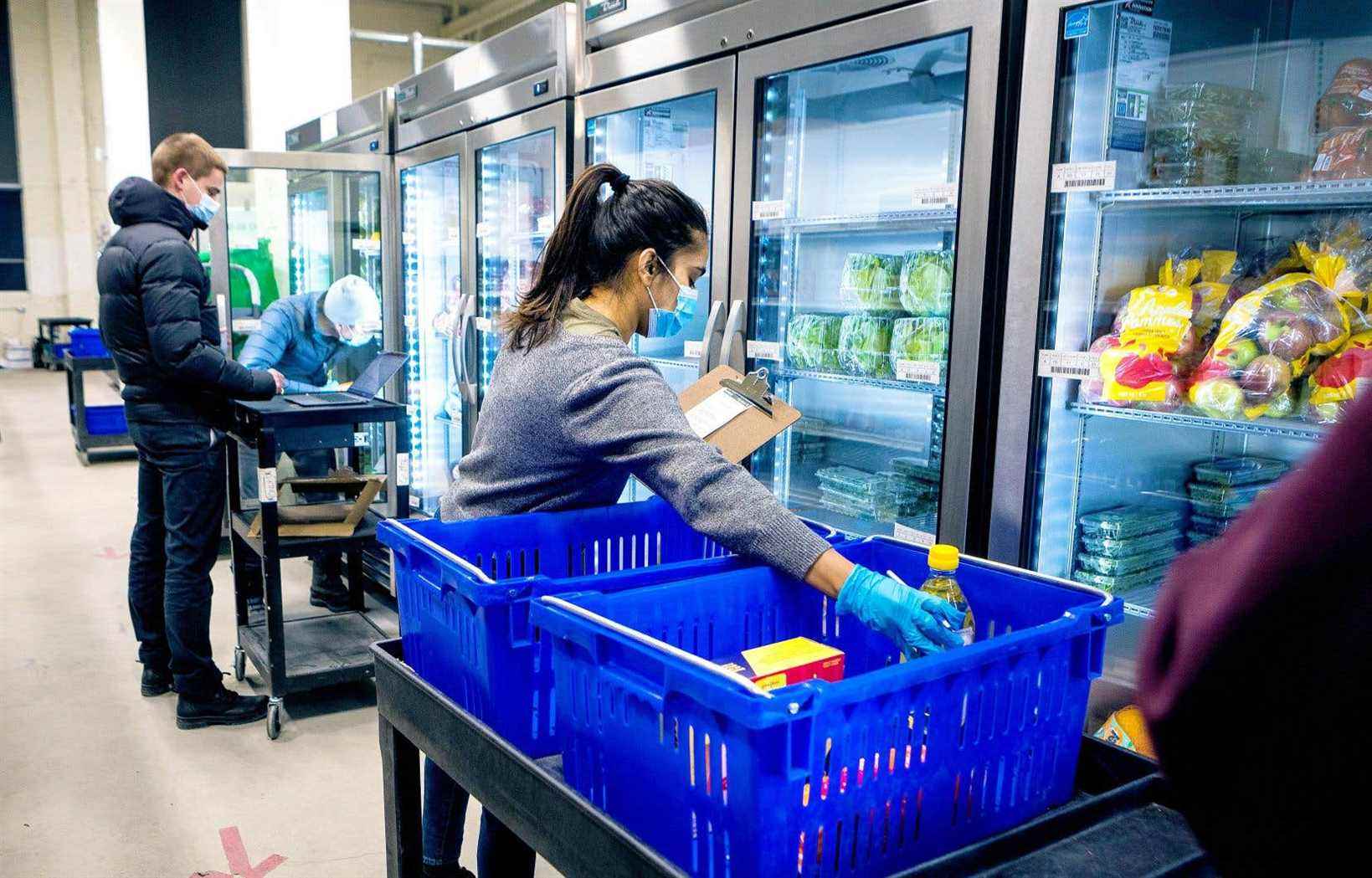As revenues and stock prices decline, Goodfood is banking on online grocery delivery to resume growth. Many companies in this field, however, have already won the hearts of consumers. What do Quebecers want when it comes time to eat via the Internet?
Since this fall, Frédérik Lacharité hardly goes to the grocery store. He orders both ready-to-cook meals and the rest of his food through Goodfood. Since the Montreal company added this service, he has opted for delivery on demand and receives food in 30 minutes.
“It’s less complicated to plan. You don’t even have to think about it in advance. I can decide this afternoon what I want to eat tonight,” says the enthusiast, who owns shares in the company.
Bruno Guillemette, another Goodfood customer for meal boxes, doesn’t see the point of grocery shopping this way. “There’s not everything I want, so I’m going to have to go grocery shopping anyway. And I’m not used to this service, ”says the Montrealer. Annick Morin, for her part, prefers to order online from other grocery stores.
Small distribution centers
It will be essential for Goodfood to convince people like Mr. Guillemette and Mr.me Morin to convert to its online grocery service. For the quarter that ended on December 4, the ready-to-cook meals specialist’s revenue fell 15% compared to the same period a year earlier, reaching $77.8 million, according to financial results. presented on Tuesday. On the Toronto Stock Exchange, Goodfood’s stock ended the session at $3.26, down $0.42, or 11.4%, from the previous day.
It must be said that the demand for boxes of food in small portions adapted to the chosen recipes experienced meteoric growth at the start of the pandemic, to drop and stabilize with the reduction of sanitary restrictions.
However, the co-founder and CEO, Jonathan Ferrari, wanted to be reassuring during a conference with analysts. He points out that just eight weeks after the launch of 30-minute delivery in Montreal and Toronto, the service has nearly 13,000 active subscribers, half of whom are new customers of the company. The average basket price is around $65 and it increased from November to December.
The delivery service currently concerns only a small part of its active customers, who are 254,000 in the country. But the company will invest a lot in it this year, in particular with the creation of small distribution centers dedicated to on-demand delivery.
“According to a survey of Canadians, 85% of consumers see on-demand delivery in less than two hours as an added value, and the majority of these people would be willing to change retailers or stores to have faster delivery,” Ferrari said. But Goodfood is the first company to promise such quick grocery delivery times. Others, like Instacart, offer same-day delivery.
Fight waste
Will Goodfood be able to make its mark in this niche? Is the shortest delivery time what consumers are looking for in the first place?
The president and founder of Cook it, a competitor of Goodfood in the ready-to-cook field, does not believe in this avenue. Judith Fetzer says that the Montreal company, which today has around 700 employees, also experienced an unprecedented explosion in demand at the start of the pandemic. Growth has slowed, but it still continues to this day, she says. To maintain it, M.me Fetzer is focusing instead on expanding its product offering, such as ready-to-eat, baby food and pet food.
“We believe in the subscription model, which helps predict demand and eradicate food waste. On demand [comme Goodfood], you need to have an infinite number of products in stock,” explained the businesswoman.
By knowing in advance what consumers want, Cook it says it reduces waste since it orders the exact quantity of food needed from producers, who are primarily Quebecers.
For similar reasons, Lufa Farms, greenhouse growers and online market, also recently decided to get rid of their piece order option, delivered in a few days, to focus only on weekly subscriptions.
Eat local
According to Lufa’s director of communications, Yourianne Plante, customers basically have three concerns: getting local food, being able to buy a full grocery store and having it delivered to their homes. By maintaining focus on these goals, including expanding its delivery area and offering more products, Lufa has stabilized its number of orders per week at around 25,000.
Several virtual grocers have made similar observations regarding consumer wishes.
“We want to expand the number of businesses on our platform. The more shops there are, the more the customer will have a turnkey solution for all his purchases”, commented Walid Baba-Moussa, co-founder of Epipresto, which offers the purchase and delivery of niche products from around twenty small and medium-sized grocers in Montreal.
“We are 100% local, indicated Jonathan L. Bélanger, founding president of Maturin, like on the farm. We’re not trying to steal customers from Goodfood. Our strategy is to offer a unique experience to consumers by working with farms that have different products. »
Mr. Bélanger also points out that the food market is huge and that there is room for several offers to meet all needs.
With The Canadian Press
